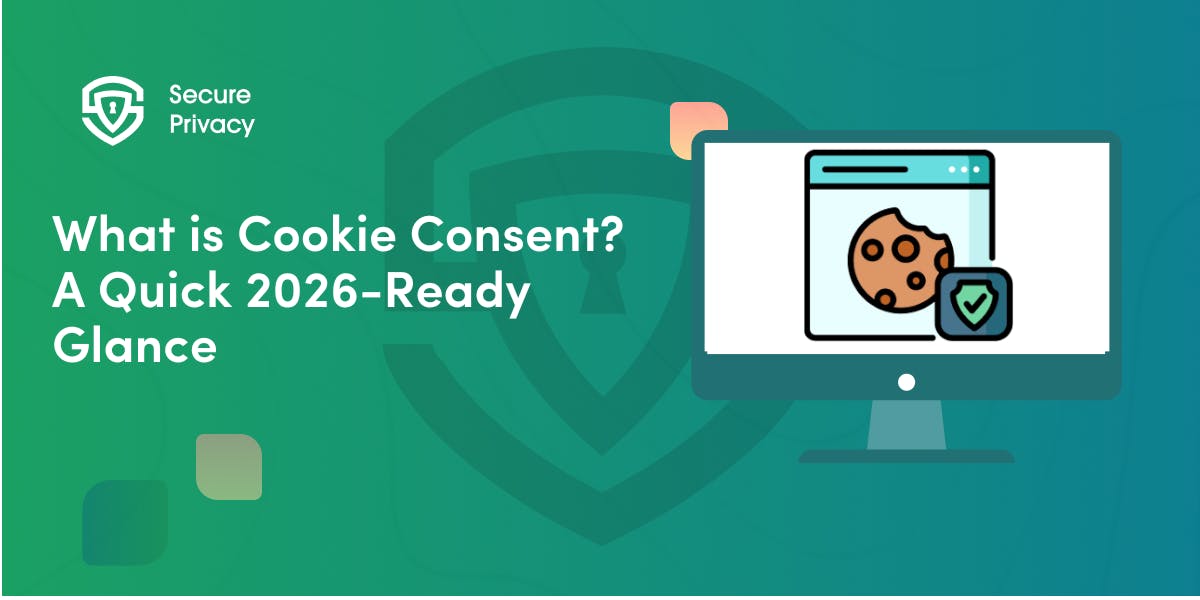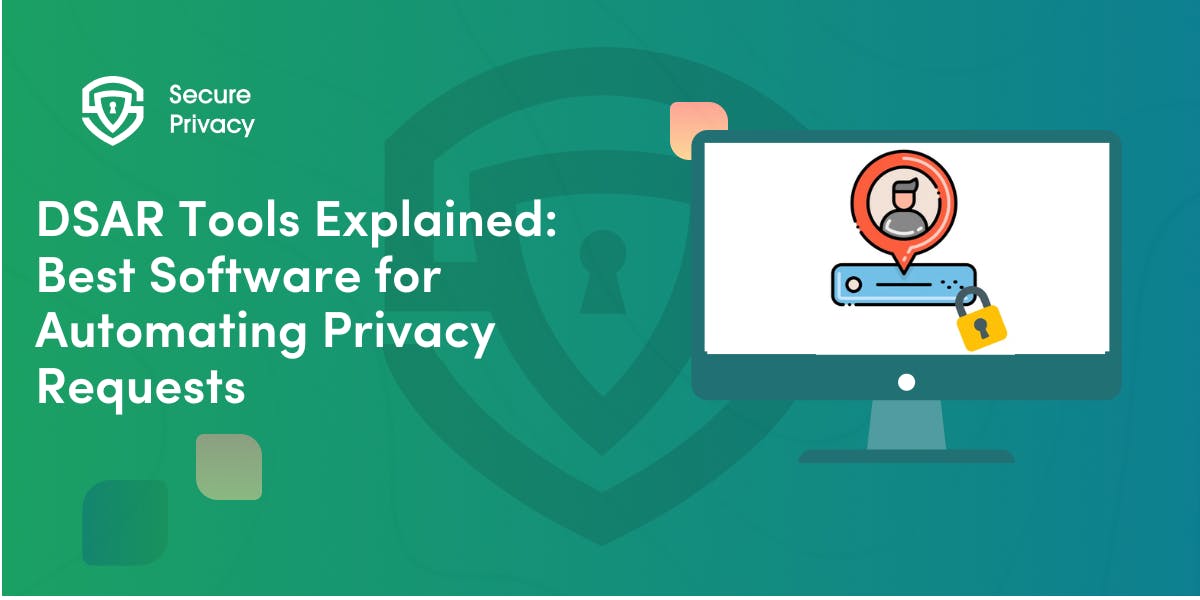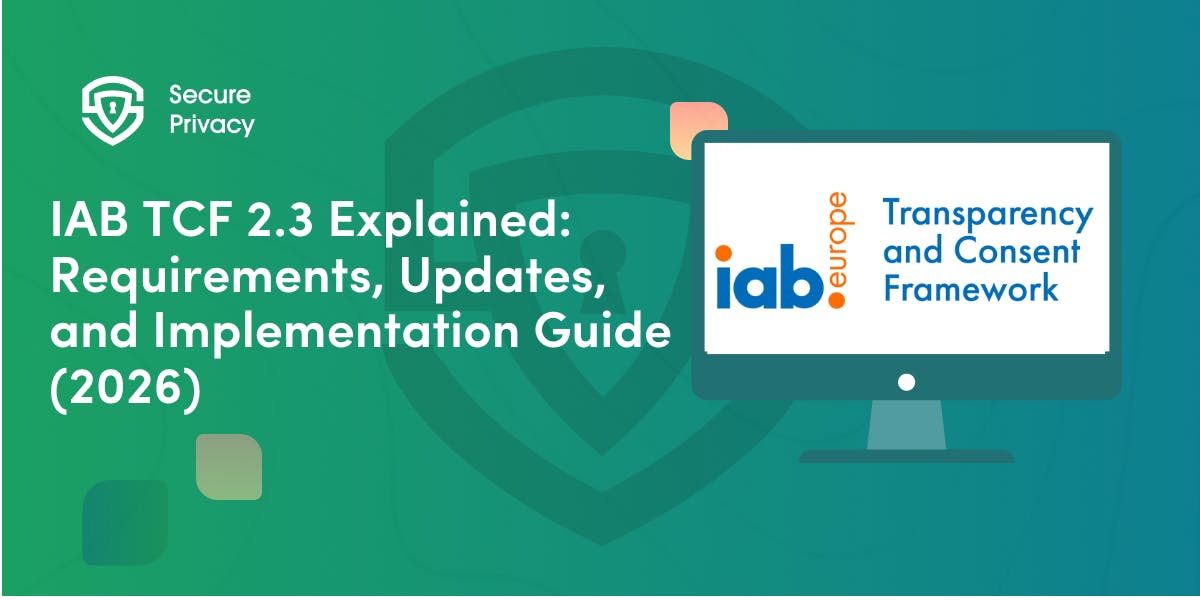Google Consent Mode on Mobile: A Practical Guide for Marketers and Developers
Your mobile analytics are broken, and you might not even know it. Google consent mode mobile implementation has become mandatory for apps serving European users as of March 2024, yet most businesses are still using desktop-only solutions that fail catastrophically on mobile devices.
In this complete guide, you'll discover how to properly implement google consent mode v2 implementation on mobile platforms, avoid costly mistakes that tank your data collection, and ensure your mobile apps remain compliant while maintaining accurate analytics.

Prioritizing user privacy is essential. Secure Privacy's free Privacy by Design Checklist helps you integrate privacy considerations into your development and data management processes.
Why Mobile Needs Special Attention for Consent Mode
Mobile environments create unique challenges that desktop consent implementations simply don't address. Higher bounce rates make poorly designed consent banners particularly damaging—users will abandon your app rather than navigate complex privacy controls on small screens.
Google consent mode mobile behavior differs fundamentally from desktop implementations. Mobile apps have different tag firing patterns, consent persistence mechanisms, and user interaction models that require specialized configuration. Load speed becomes critical when consent banners block essential app functionality.
Mobile-specific technical challenges include WebView containers, hybrid app frameworks, and single-page applications that don't follow traditional page-load consent patterns. These environments require sophisticated consent management that most basic implementations can't handle.
What Is Google Consent Mode v2?
Google consent mode v2 implementation represents a fundamental shift in how mobile applications communicate user consent choices to Google services while maintaining privacy regulation compliance. The system adjusts Google SDK behavior based on real-time consent status rather than blocking services entirely.
Google consent mode v2 implementation introduces four critical consent types: analytics_storage for visit tracking, ad_storage for advertising data, ad_user_data for Google advertising integration, and ad_personalization for remarketing capabilities.
Mobile apps using Firebase Analytics, Google Analytics for Firebase, or Google Ads must implement these consent signals to maintain service access in regulated jurisdictions. Tag manager mobile consent becomes essential for apps using Google Tag Manager to coordinate multiple tracking services.
The system enables continued data collection for essential business functions even when users decline optional consent categories, ensuring mobile apps maintain basic functionality while respecting privacy preferences.
Consent Mode on Mobile Web vs Desktop
Google consent mode mobile web implementations require different approaches compared to desktop websites due to fundamental differences in user interaction patterns, screen constraints, and technical architectures.
Mobile web environments process consent differently because of touch-based interactions, smaller viewport sizes, and varying network conditions. Mobile gdpr consent banner implementations must account for thumb-friendly button sizes, readable text at mobile scale, and minimal friction in consent flows.
Tag behavior changes significantly between mobile and desktop implementations. Mobile browsers handle cookie storage, local storage, and session persistence differently, requiring adjusted consent management strategies. Consent mode hybrid app scenarios add additional complexity when web content loads within native app containers.
Network latency and bandwidth constraints on mobile devices make consent mode efficiency critical. Heavy consent management systems that work acceptably on desktop connections can cause significant performance degradation on mobile networks.
Consent Mode in Hybrid Apps and WebViews
Consent mode hybrid app implementations present unique challenges because Google Consent Mode wasn't designed for native app environments. However, hybrid frameworks like Capacitor, Cordova, and React Native require specialized approaches to bridge web-based consent management with native app functionality.
WebView containers complicate consent implementation because they create isolated environments where traditional web consent mechanisms may not function properly. Consent signals must be passed between the WebView and native app layers to ensure comprehensive coverage.
Single-page applications (SPAs) within mobile contexts require consent persistence that survives navigation changes without traditional page reloads. The consent state must be maintained across route changes while ensuring new content respects established consent preferences.
Native mobile app SDKs for Google services require different consent configuration compared to web implementations. Firebase Analytics for iOS and Android uses platform-specific consent APIs that must be coordinated with web-based consent collection interfaces as well as AndroidTV and tvOS.
Secure privacy google consent mode solutions address these hybrid challenges by providing unified consent management that works across web, native, and hybrid environments without requiring separate implementations.
Mobile-Specific Implementation Requirements
Android applications using Firebase Analytics require consent configuration in the app manifest combined with runtime consent updates. Default consent states must be set conservatively to ensure compliance before user interaction, then updated dynamically as users make consent choices. These platform-specific requirements extend beyond traditional mobile phones to include Android TV and connected device implementations which demand specialized adaptation of consent frameworks.
iOS implementation follows similar patterns but uses Info.plist configuration files for default states. The iOS Privacy Manifest requirements add additional complexity, requiring apps to declare all data collection practices regardless of consent status.
React Native applications can implement google consent mode mobile through the react-native-firebase library, which provides JavaScript APIs for native consent management. Flutter applications require integration with the Firebase Flutter SDK and platform-specific consent configuration.
Mobile cookie consent solution providers must address these platform-specific requirements while maintaining consistent user experiences across different mobile environments. Cross-platform consent synchronization becomes critical for users who access services through both web and mobile interfaces.
Secure Privacy's Mobile Consent Mode Support
Secure privacy google consent mode delivers comprehensive solutions that address the unique challenges of mobile implementations without requiring extensive development resources or platform-specific expertise.
Mobile-Ready Consent Banners provide touch-optimized interfaces with responsive design that adapts to various screen sizes and orientations. The banners maintain visual hierarchy and usability across smartphones, tablets, and different mobile browsers.
Real-Time Google Consent Mode v2 Synchronization ensures consent signals reach all Google services immediately when users make choices. The system handles the complex API interactions required for proper google consent mode v2 implementation across different Google products.
Cross-Platform Consistency maintains identical consent experiences across web, iOS, Android, and hybrid app implementations. Users receive consistent privacy controls regardless of how they access your services.
Performance Optimization ensures consent management doesn't impact mobile app performance through efficient code loading, minimal network requests, and optimized rendering for mobile processors and memory constraints.
Common Mobile Consent Mode Pitfalls
Assuming desktop consent implementations automatically work on mobile represents the most common and costly mistake. Desktop consent banners often become unusable on mobile screens, creating compliance gaps and user experience failures.
Google consent mode v2 implementation failures frequently occur when developers don't update existing consent systems for the new parameter requirements. Legacy implementations may appear functional while failing to communicate proper consent signals to Google services.
Poor mobile gdpr consent banner UX causes dramatically higher bounce rates as users abandon apps rather than navigate complex consent interfaces. Consent fatigue increases on mobile devices where privacy controls feel more intrusive than on desktop computers.
Tag manager mobile consent misconfiguration commonly occurs when developers don't account for mobile-specific tag firing patterns, leading to tracking before consent or failure to track after consent is granted.
Performance impact from heavy consent management systems causes app abandonment and negative user experiences. Mobile users expect instant responsiveness that poorly optimized consent systems can't deliver.
Mobile Consent Mode Implementation Checklist
Configure Default Consent States conservatively across all platforms to ensure compliance before user interaction. Set analytics_storage, ad_storage, ad_user_data, and ad_personalization to denied by default for users in regulated jurisdictions.
Implement Platform-Specific APIs for iOS Info.plist configuration, Android manifest settings, and any hybrid framework requirements. Ensure consistent behavior across all supported platforms.
Test Consent Signal Propagation to verify that consent choices properly reach Google Analytics, Google Ads, and other integrated services. Use Google Analytics Real-Time reports to confirm consent mode signals are functioning.
Validate Mobile Banner Functionality across different devices, screen sizes, and orientations. Ensure consent interfaces remain usable on the smallest supported devices and largest tablet screens.
Configure Geo-Adaptive Consent to display appropriate consent interfaces based on user location. European users need granular consent controls while other regions may require different approaches.
Monitor Performance Impact to ensure consent management doesn't degrade app performance or user experience. Measure loading times and user interaction metrics before and after consent implementation.
Testing and Validation Strategies
SDK Version Verification ensures your mobile app uses compatible versions of Firebase Analytics, Google Analytics, or other Google services. Outdated SDKs may not support proper consent mode functionality.
Device Testing Protocols should cover major mobile platforms, operating system versions, and device configurations your users typically use. Consent functionality must work reliably across your entire user base.
Regional Testing confirms geo-adaptive consent features work properly across different geographic locations and regulatory requirements. Use VPN testing or global testing services to validate location-based behavior.
Analytics Validation verifies that consent choices properly affect data collection and reporting in Google Analytics and other integrated services. Test both granted and denied consent scenarios thoroughly.
Advanced Mobile Consent Strategies
Progressive Consent Collection reduces initial friction by collecting essential consent first, then requesting additional permissions as users engage with features requiring them. This approach improves conversion rates while maintaining compliance.
Contextual Consent Requests present privacy choices when users access features requiring specific permissions rather than front-loading all consent decisions. Mobile users respond better to just-in-time consent requests.
A/B Testing Consent Interfaces helps identify design patterns and messaging that maximize both user acceptance and compliance effectiveness. Mobile-specific testing accounts for touch interaction patterns and screen constraints.
Get Mobile Consent Right — Fast
Google consent mode mobile implementation doesn't require months of development or specialized privacy teams when you use the right tools. Secure privacy google consent mode handles the complex technical requirements while providing mobile-optimized user experiences that maintain compliance and app performance.
Mobile users won't tolerate broken consent experiences that desktop users might overlook. Get your mobile gdpr consent banner implementation right the first time with automated systems that adapt to regulatory changes and platform updates.
Launch GDPR-compliant banners with google consent mode v2 implementation for mobile in under 15 minutes—Start Your Free Trial
Transform your mobile privacy compliance with Secure Privacy's complete mobile cookie consent solution. Your users deserve seamless experiences that respect their privacy choices while maintaining the analytics insights your business needs.
Frequently Asked Questions About Google Consent Mode Mobile
Q: Does google consent mode mobile work differently than desktop implementations?
A: Yes. Google consent mode mobile requires different approaches due to touch interactions, screen constraints, and mobile browser behaviors. Desktop consent implementations often fail on mobile devices, requiring specialized mobile-optimized solutions.
Q: What google consent mode mobile frameworks support hybrid apps?
A: Google consent mode mobile works with React Native, Flutter, Capacitor, and Cordova through platform-specific SDKs. Each framework requires different implementation approaches, but unifiead consent management platforms can support multiple frameworks simultaneously.
Q: Is google consent mode mobile mandatory for all mobile apps?
A: Google consent mode mobile becomes mandatory for apps serving European users as of March 2024. Apps using Google Analytics, Google Ads, or Firebase Analytics must implement proper consent signaling to maintain service access.
Q: How does google consent mode mobile affect app performance?
A: Properly implemented google consent mode mobile has minimal performance impact. However, poorly optimized consent systems can cause significant slowdowns. Choose lightweight solutions designed specifically for mobile environments.
Q: Can google consent mode mobile sync consent across platforms?
A: Advanced google consent mode mobile platforms support cross-platform consent synchronization. Users' consent choices on mobile apps can propagate to web interfaces and vice versa, providing consistent privacy experiences.
Q: How quickly can developers implement google consent mode mobile?
A: With the right platform, google consent mode mobile implementation takes under 15 minutes for basic setup. Complex consent mode hybrid app scenarios may require additional configuration, but modern consent management platforms streamline the process significantly.
Get Started For Free with the
#1 Cookie Consent Platform.
No credit card required

What is Cookie Consent? A Quick 2026-Ready Glance
Your website loads. Cookies track users. But without proper cookie consent, you're violating GDPR — risking fines up to €20 million or 4% of global revenue. Cookie consent is the legally required mechanism by which websites obtain explicit user approval before deploying non-essential tracking technologies. This requirement stems from GDPR Article 4(11) and the ePrivacy Directive, mandating that consent must be freely given, specific, informed, and unambiguous.
- Legal & News

DSAR Tools Explained: Best Software for Automating Privacy Requests
You're drowning in data subject access requests. Manual searches through dozens of systems miss regulatory deadlines and expose organizations to fines starting at $2,500 per violation. The solution? DSAR tools — purpose-built software that automates the entire process of responding to data subject access requests, from intake to delivery.
- Legal & News

IAB TCF 2.3 Explained: Requirements, Updates, and Implementation Guide (2026)
Your ad revenue dropped 40% overnight. Google stopped bidding on your inventory. Your DSP partners flagged your traffic as non-compliant. The culprit? An outdated TCF 2.2 consent string after the February 2026 enforcement deadline.
- Legal & News
- Cookie Consent
